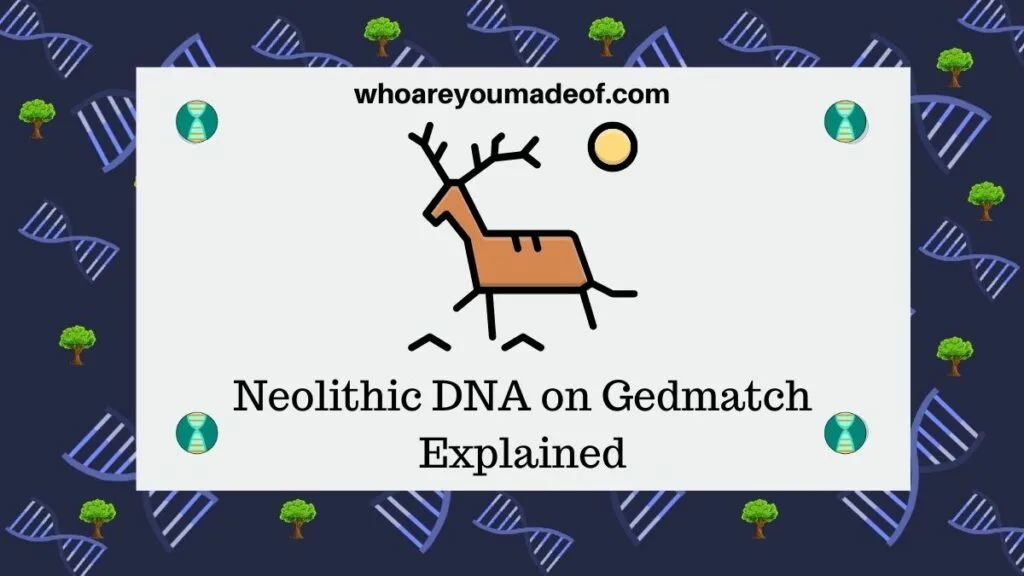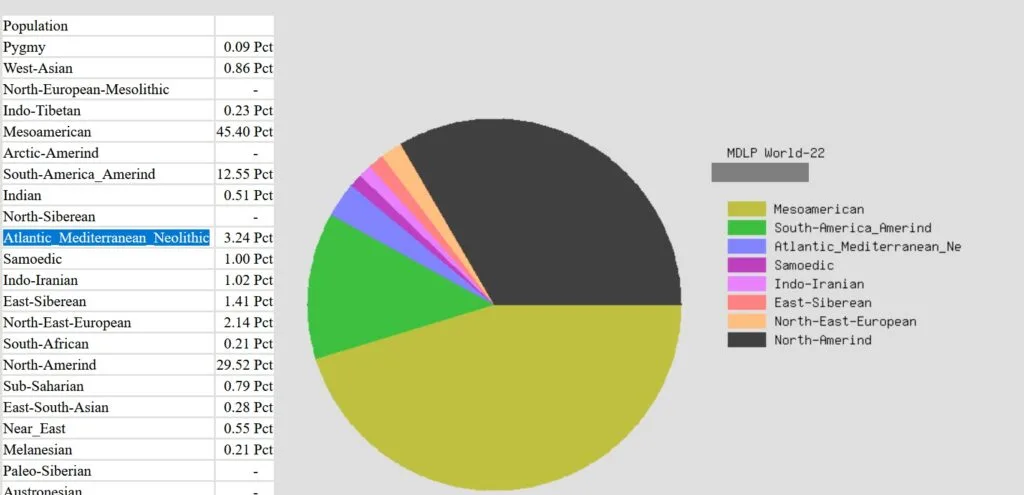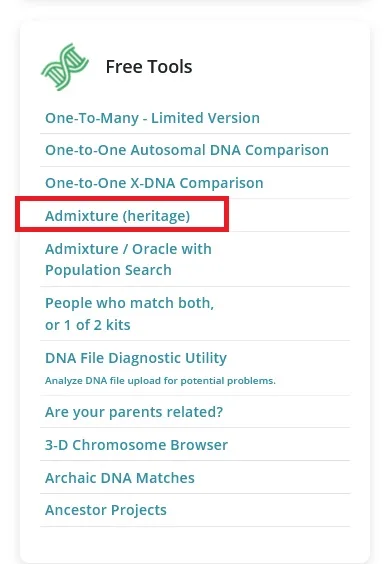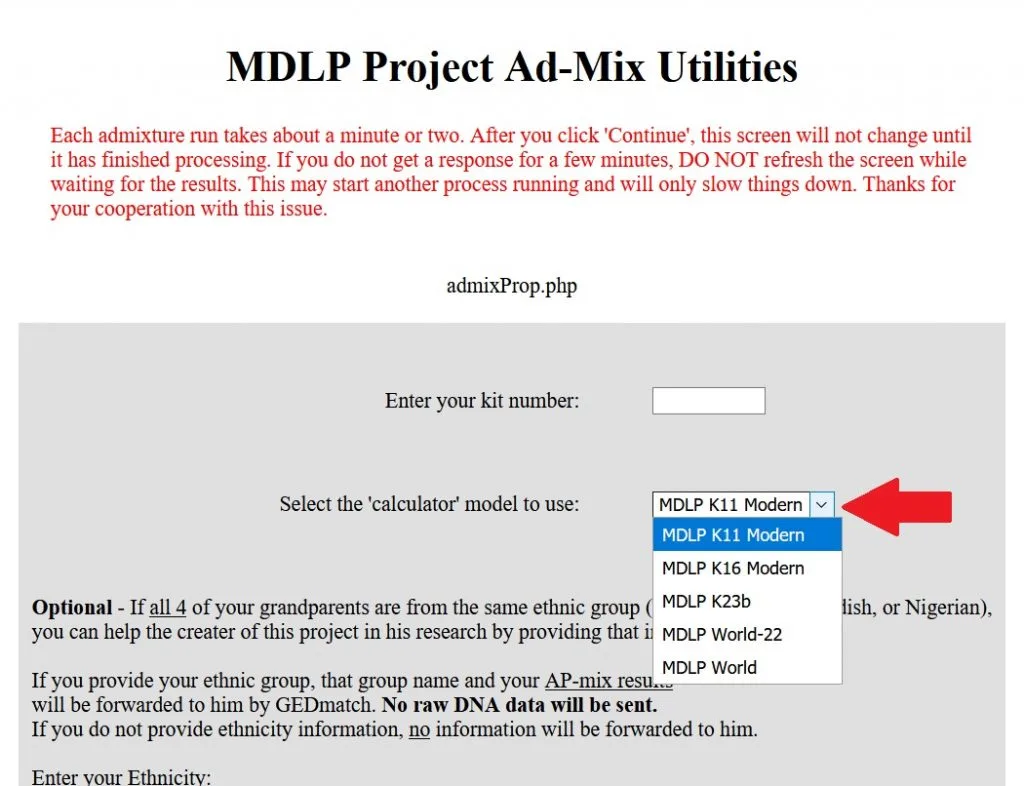Did you see Neolithic DNA on your Gedmatch results? In this post, find out why you have DNA from the New Stone Age in your admixture results.
In this article, you will learn:
- What Neolithic DNA is on Gedmatch
- What is means to have Neolithic DNA
- Which Gedmatch Admixture Calculators report Neolithic DNA
- How to find out if you have Neolithic DNA

Exploring Gedmatch Admixture calculators can be interesting and entertaining, and it’s a great way to get a different perspective as to where your ancestors may have lived.
Even though it is informative and useful information, we might find ourselves a bit confused because of the terminology used in Gedmatch results. The names of population groups often refer to historical groups or regions, and many people are unfamiliar with these terms.
What is Neolithic on Gedmatch?
The Neolithic Period, or the New Stone Age, began about 12,000 years ago. Neolithic population groups on Gedmatch Admixture calculators, such as the Atlantic Mediterranean Neolithic group on the MDLP World 22, are connected to studies of ancient DNA.
There are multiple calculators on the site that report a possible match to these ancient Neolithic populations, but they don’t cover every possible geographic region of the world.
What do the specific Neolithic populations mean on Gedmatch?
There are currently nine individual Neolithic groups that you could compare your DNA with on Gedmatch using the Admixture Calculators.
The are as follows:
- Greek Neolithic
- Afanasievo Eneolithic
- Anatolia Neolithic
- Andronovo Eneolithic
- Samara Eneolithic
- Atlantic Mediterranean Neolithic
- Samara Eneolithic
- Anatolian Neolithic
- Steppe Eneolithic
Some of the names of these populations cover regions that we find recognizable. For example, the Greek Neolithic seems fairly obvious.
Other populations, such as the Anatolian Neolithic are traced back to groups that we are less likely to be acquainted with. The Anatolian Neolithic region covers what is now Turkey and Northern Syria.
You might notice that some population groups are called “Eneolithic”. This simply refers to an ancient, but more recent Copper Age, which began about 9000 years ago and was the “transition period” between the Neolithic Period and the Bronze Age.
The Bronze Age is the period of ancient history that we modern humans are most familiar with. We might think of Ancient Egpyt, Babylonia, and the Shang Dynasty when referring to the Bronze Age.
The Eneolithic period is the bridge between our “modern” ancient civilizations, and the ancient peoples who lived during Neolithic times, who had just begun to discover agriculture.
What does it mean to have Neolithic DNA?
The term “Neolithic” DNA is a sort of misnomer. Instead, if we show Neolithic DNA on Gedmatch, we should say that our DNA matches certain Neolithic population groups.
For example, the person below shows about a 3.24% match to the Atlantic Mediterranean Neolithic population.

This person can trace most (about 90%) of their ancestry back to indigenous North and South America, and has Native American mtDNA and Y-DNA haplogroups. Even so, on autosomal DNA tests, they consistently show small percentages (5-10%) matching to certain European, African, and Asian populations.
We all have Neolithic DNA
In reality, we all have Neolithic DNA, in a way. This is because every single human being alive on this planet had ancestors who were alive, living somewhere, during the Neolithic period.
The DNA that you inherited from your parents was inherited from their ancestors. All of the DNA that we have was passed down more than 400 (give or take a few dozen) generations from our Neolithic ancestors to our parents, who passed it down to us.
Of course, we will never be able to trace our family tree back 12,000 years to the beginning of the New Stone Age. It is kind of interesting to think about how we do have this connection to our very, very distant ancestors, however.
Which Admixture Calculators Report Neolithic DNA?
There are three calculators on Gedmatch that have specific Neolithic populations included on the results. The populations included are the ones detailed earlier in this article and the calculators are as follows:
- MDLP Project (MDLP K11 Modern and MDLP World-22)
- puntDNAL (puntDNAL K12 Ancient)
- GedrosiaDNA (Ancient Eurasia K6)
If you have uploaded your DNA to Gedmatch, you can compare your kit (your DNA data file on the site) to see if your DNA matches any of the available Neolithic regions.
How to check to see if you have Neolithic in your DNA on Gedmatch
If you would like to see if your DNA matches any of the Neolithic regions on Gedmatch, you could do so in just a matter of minutes. If your DNA is already uploaded to Gedmatch, you could see your results in less than a minute or so.
All you need to have is your kit number, and the name of the calculator and calculator model that you would like to use for your comparison. You could run your DNA in more than one calculator to see if your results are different.
To use the Admixture Calculators, simply click the tool from your main Gedmatch dashboard:

Then, choose the calculator that you would like to use. For example, you can select the MDLP Project, and then choose the specific calculator that you would like to use to analyze your DNA.

Be sure to enter your kit number, and once you’ve chosen your model, click “Continue” to get your results. You should see them on the next screen after 30 second or so.
You might also be interested in comparing your DNA with ancient DNA samples that have been uploaded to Gedmatch. It’s free for Gedmatch users, too!
Conclusion
I hope that this post helped you understand more about Neolithic DNA, and why it might be showing up on your Gedmatch Admixture results.
If you have any questions, or if you would like to share your own observations from your Gedmatch results, please join us in the discussion below.
Thanks for stopping by!

d.p.
Saturday 8th of October 2022
Thank you for this explanation. I used that calculator which showed that I had 21% Atlantic Mediterranean Neolithic but was quite confused by this. It's a bit clearer now.
NZ
Sunday 28th of February 2021
Thank you for explaining this!
Mercedes
Monday 1st of March 2021
You are so welcome! Thank you for taking the time to leave a comment. Sincerely, Mercedes